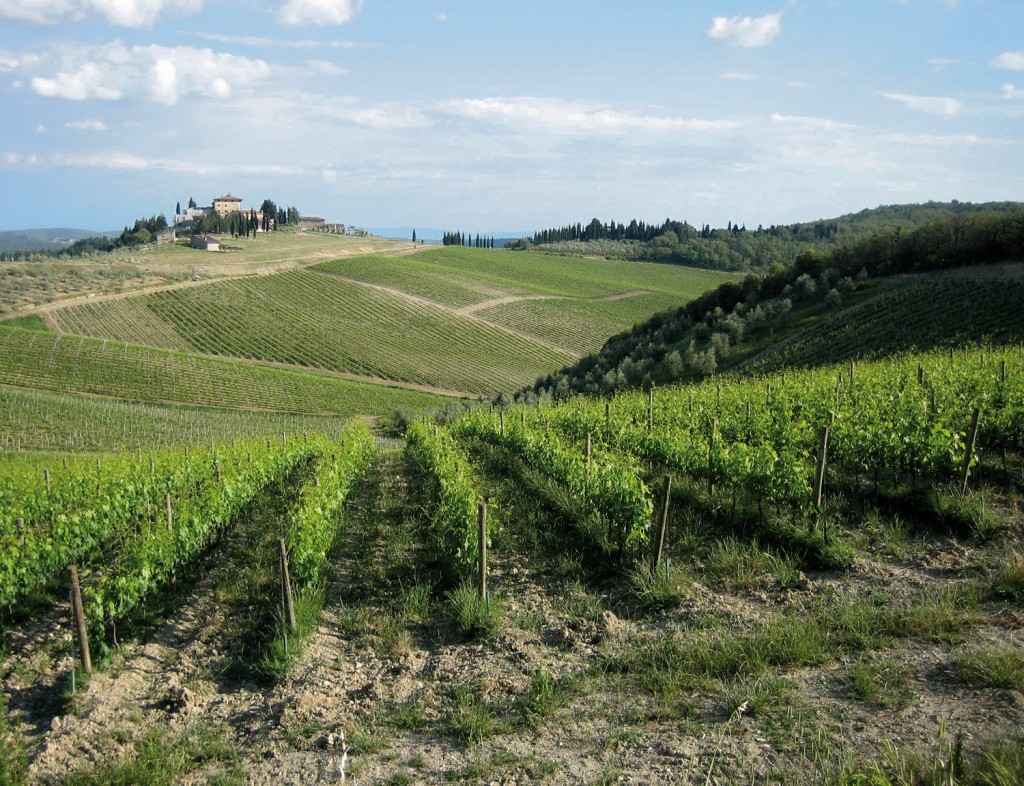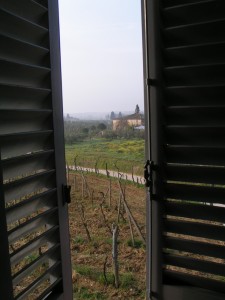| Aosta Valley | Piedmont | Liguria | Lombardy | Trentino-Alto Adige/Südtirol | Friuli-Venezia Giulia | Veneto| Emilia-Romagna | Tuscany | Marche | Umbria| Lazio | Abruzzo | Molise | Campania | Basilicata | Apulia (Puglia) | Calabria | Sicily | Sardinia |
- Region in Central Italy, capital is Florence
- The region of Tuscany includes seven coastal islands and is Italy’s fifth largest region
- The Tyrrhenian Sea is to the west and gives the area a warm Mediterranean climate
- Toscana wine is Italian wine from the Tuscany region
- Tuscany has twenty-nine Denominazioni di origine controllata (DOC) and seven Denominazioni di Origine
- Controllata e Garantita (DOCG) spread across the region’s ten provinces
- The soil of Tuscany is very poor, and producers emphasize low yields and higher quality levels in their wine
- It is a region full of tradition, but in continuous evolution since the introduction of international grape varieties and the use of the French barriques
- Sangiovese grape is Tuscanys’ most prominent grape, however, many different clonal varieties exist
- Home to some of the world’s most notable wine regions: Chianti, Brunello di Montalcino and Vino Nobile di Montepulciano (primarily made with Sangiovese grape )
1. Chianti
- The Chianti zone is Tuscanys’ largest classified wine region, located in the middle of Tuscanny
- Chianti is split into two DOCG- Chianti and Chianti Classico
- Chianti is permitted to include as little as 75% Sangiovese, a maximum of 10% Canaiolo, up to 10% of the white wine grapes Malvasia and Trebbiano and up to 15% of any other red wine grape grown in the region, such as Cabernet Sauvignon
- Riserva Chianti is aged for at least 27 months, some of it in oak, and must have a minimum alcohol content of 12.5%
- Wines from the Chianti DOCG can carry the name of one of the six sub-zones or just the Chianti designation
- The Chianti Superiore designation refers to wines produced in the provinces of Florence and Siena but not in the Classico zone
- In addition to producing the well known red Chianti wine, the Chianti zone also produces white, other Rosso reds and Vin Santo
2. Brunello di Montalcino
- Brunello is the name of the local Sangiovese variety that is grown around the village of Montalcino
- Located south of the Chianti Classico zone, the Montalcino range is drier and warmer than Chianti
- In the 1980s, it was the first wine to earn the DOCG classification
- Brunello di Montalcino wines are required to be aged for at least four years prior to being released, with riserva wines needing five years
- These wines often need years of aging to soften from their tight and tannic youth
- In 1984, the Montalcino region was granted the DOC designation of Rosso di Montalcino (often called “Baby Brunellos”)
- These “Baby Brunellos” are typically made from the same grapes, vineyards and style as the regular Brunello di Montalcino but are not aged as long and more approachable in their youth

3. Vino Nobile di Montepulciano
- Received DOCG status shortly after Brunello di Montalcino, in 1980 (DOCG covers the red wine of the Montepulciano area)
- Located in the southeastern region of Tuscany, the climate of the region is strongly influenced by the sea
- The variety of Sangiovese in Montepulciano is known as Prugnolo Gentile and is required to account for at least 80% of the wine
- The wines are required to age two years prior to release, with an additional year if it is to be a riserva
Vernaccia di San Gimignano - In 1966, it’s was the first wine to receive a DOC designation
- White wine made from the Vernaccia grape in the areas around San Gimignano
- Cabernet Sauvignon (planted in Tuscany for over 250 years) more recently popular with the rise of the “Super Tuscans”
- Super Tuscans are an unofficial category of Tuscan wines; not recognized within the Italian wine classification system
- Super Tuscans are wines that made from non-indigenous grape varieties and using blends that were well out of the Chianti DOC regulations
- These blends often contained some Sangiovese but much less than the percentage stated by DOC regulations
- Before the IGT was created, “Super Tuscan” wines were labeled Vino da Tavola
- Many of the original Super Tuscans now qualify as DOC or DOCG wines
- Some producers still prefer the declassified rankings or to use the Indicazione Geografica Tipica (IGT) classification of Toscana
- Other international varieties found in Tuscany include Cabernet franc, Chardonnay, Merlot, Pinot noir, Sauvignon blanc and Syrah
- Area also known for the dessert wine Vin Santo, made from a variety of the region’s grapes

 Masters of Wine
Masters of Wine Wine and Spirits Education Trust
Wine and Spirits Education Trust